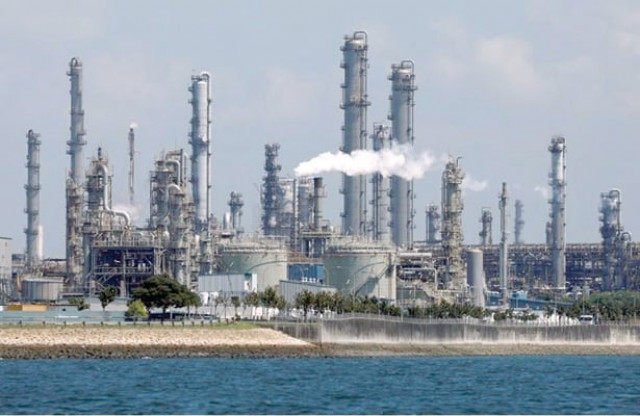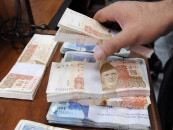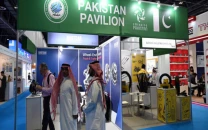Will new trade bloc isolate Pakistan?
As competitors integrate, their trade percentages rise while Pakistan loses its share

Recently, 15 Asian countries including 10 members of the Association of Southeast Asian Nations (Asean), China, Japan, South Korea, Australia and New Zealand signed the most significant regional trade agreement negotiated so far.
The deal known as the Regional Comprehensive Economic Partnership (RCEP) is larger than the European Union and the US-Mexico-Canada Agreement. RCEP countries comprise almost one-third of the world’s population and account for about 30% of the global economy.
As a result of this agreement, several least developed and developing Asian countries have integrated their economies with developed countries such as Australia, Japan and New Zealand.
The national income of RCEP members could increase by an estimated $186 billion annually. With greater market access in goods and services, the lower-income RCEP countries will become more competitive, attract higher investment levels and benefit from the relocation of industries.
These countries will further harmonise into global value chains with simplified rules of origin.
Although India participated in RCEP negotiations, it pulled out last year due to concerns about giving tariff concessions to China. Nevertheless, the RCEP members have agreed to allow India to join in future if it so decides.
India may not be in a rush as it already has a free trade agreement (FTA) with the 10 Asean countries and a quadrilateral agreement with Australia, Japan and the US. Besides security, they are also discussing deepening trade links.
But where is Pakistan? Has there been any study to determine how Pakistan will become less competitive against those Asian countries that have joined this bloc?
Did we explore how we could be part of this bloc during the eight years that this agreement had been in negotiations?
Despite Pakistan’s protectionist outlook, it could have taken comfort that RCEP countries had up to 20 years of transition period to liberalise most of their tariffs.
Even afterwards, there was enough room to keep sensitive sectors protected, as the agreement did not call for full liberalisation of tariffs. Furthermore, since this was a China-backed alternative to the Trans-Pacific Partnership (TPP), Pakistan could have sought its help with its membership.
With China now joining the RCEP, Pakistan’s preferential tariff rates will become redundant, as China would be obliged to give more concessions to the RCEP members.
Since the early 1990s, Pakistani policymakers have been making pronouncements about “Look East Policies”. While Pakistan established preferential trade agreements (with limited scope) with some Asean members such as Malaysia and Indonesia, it could not make any headway with the rest.
Pakistan has had ongoing FTA negotiations with Singapore since 2005, Thailand since 2013 and South Korea since 2015. However, despite many rounds, there has been limited progress.
One major stumbling block has been Pakistan’s influential and highly protected industrial groups, which are opposed to further FTAs. They have somehow convinced the government that competing in global markets leads to deindustrialisation.
However, this is not what Asean or other developing countries have experienced. The greater the integration they achieved, the more industrialised they became.
Trade share shrinks
Pakistan has to realise that its protectionist and isolationist policies have left it far behind. Its share of industrial production in its gross domestic product (GDP) has gone down from 26% to 20% and the share of exports from 13.5% to 7% during the last 10 years.
Furthermore, it has been losing its global trade share by 1.45% on average annually.
During this time, Pakistan’s only trade policy pursuit has been to obtain a Generalised Scheme of Preferences (GSP)-type facility. It successfully managed to get this from the EU in 2013. But this neither helped it to regain its trade share nor increase its industrial production. Several studies show that countries removed from the GSP adopt more liberal trade policies than those benefitting from them.
These studies have concluded that the developing countries that seek integration into the reciprocity-based world trade regime are much better off than those enjoying such preferences.
A few least developing countries have ever been able to prosper, although they have such preferences from almost all developed and many developing countries.
It is time Pakistan adopts a more forward-looking approach. It must realise that there is a positive correlation between trade openness and growth. As Pakistan’s competitors integrate, their trade percentages rise while Pakistan’s isolation makes it lose its share.
Our generation has seen our neighbouring countries lift millions of people out of poverty through trade. It’s time we follow them to do the same for our people. Subsidies and protection for a few at the expense of millions of poor people are not advisable.
The writer has served as Pakistan’s ambassador to WTO and FAO’s representative to the United Nations
Published in The Express Tribune, January 4th, 2021.
Like Business on Facebook, follow @TribuneBiz on Twitter to stay informed and join in the conversation.



















COMMENTS
Comments are moderated and generally will be posted if they are on-topic and not abusive.
For more information, please see our Comments FAQ